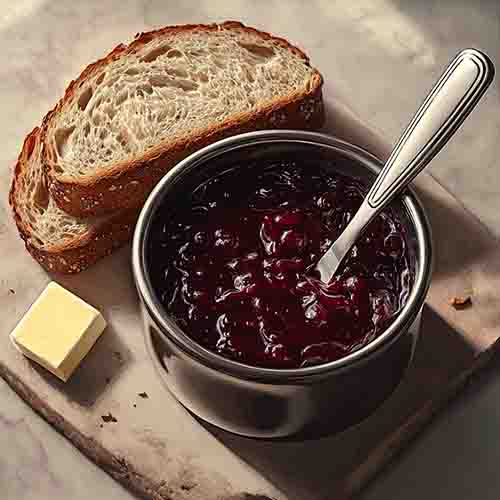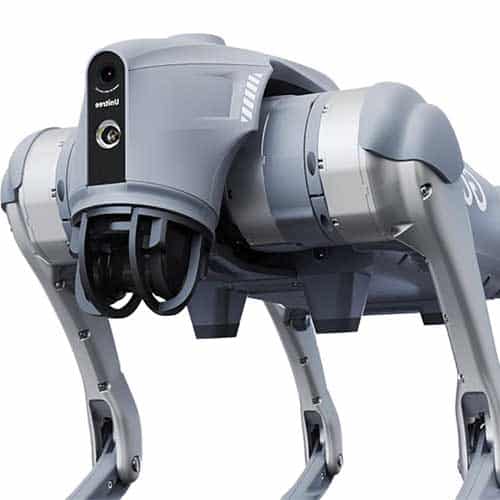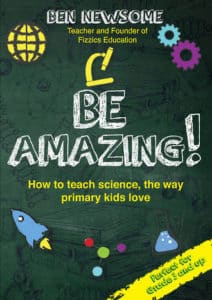When you talk with students, many have a wide variety of ideas when it comes to understanding our Artificial Intelligence (AI) works. Some students can give clear & concise descriptions of the mechanics of artificial intelligence, whilst others will give vague answers containing misconceptions and partially correct ideas. Let’s be honest, it’s confusing. Especially when you consider the pace at which AI is moving and the wide variety of versions out there.
So with this in mind, let’s help students understand the basics of algorithms and feedback loops inherent in AI by adapting a classic in-classroom activity… with jam sandwiches!
Simulating AI for Making a Jam Sandwich Using Simple Decision-Making Rules
Materials Needed
- Bread (2 slices)
- Jam (any kind)
- Butter knife or spoon
- Plate
- Napkin or paper towel
- Index cards or small slips of paper
- A friend or family member (optional)
- Blindfold (optional)
Concept
In this experiment, students will simulate the step-by-step process that a robot with AI might follow to make a jam sandwich. They will act as the “AI” by strictly following a sequence of predefined instructions. The key point is to emphasize how specific and detailed instructions (algorithms) are required to perform tasks correctly.
Steps
Part 1 – Preparing the Environment (Ingredients and Tools)
- Set Up Ingredients and Tools
- Place the bread, jam, knife or spoon, and plate on a table.
- Make sure all the items are in reach, but not yet assembled into a sandwich.
- Write Down the Rules
- On index cards, write down very simple instructions that represent the “if-then” logic a robot might follow. For example:
- “If the bread is on the plate, pick up the knife.”
- “If holding the knife, dip it into the jam jar.”
- “If the knife has jam on it, spread it on one slice of bread.”
- On index cards, write down very simple instructions that represent the “if-then” logic a robot might follow. For example:
Part 2 – Simulating the AI Process
- Follow the Instructions as a Robot
- Start by assuming the role of a “robot” AI. You are only allowed to perform actions based on the instructions written on the index cards.
- For example, if one of the instructions says, “Pick up the bread,” you can only do that after ensuring the bread is on the plate.
- Make sure the instructions are specific enough to avoid confusion. For example, instead of just saying “spread the jam,” the instruction should specify which slice of bread and how to spread it.
- Blindfold Variation (Optional)
- You or a helper can be blindfolded to simulate how robots rely purely on logical instructions (as they do not “see” the way humans do). In this case, the non-blindfolded person can read the instructions aloud
Be sure to enforce that if the instructions are too vague (e.g., “spread jam”), this may result in spreading the jam on the wrong side of the bread or missing a step. Each mistake represents how a robot or AI agent might misinterpret or fail if instructions aren’t clear.
Part 3 – Learning and Adjusting the Rules
The jam sandwich activity is a fantastic way to introduce the core concept of how algorithms and precise instructions drive AI decision-making. After students engage with this hands-on experiment, they’ll have a clearer understanding of how AI works with specific, step-by-step processes. Once they’ve mastered this, they can begin to grasp more complex AI concepts, like feedback loops and machine learning.
- Evaluate the Process
- After attempting to make the sandwich, evaluate how well the instructions worked. Did the process go smoothly, or were there gaps in the instructions that led to mistakes?
- Record any errors (e.g., missed steps, jam not spread properly) and adjust the instructions to be more precise. For example, “Pick up the jam jar with your left hand and the knife with your right hand.”
This stage mimics the evaluation of a machine learning model’s performance. Just as AI models make predictions, their instructions lead to results, which can be either successful or flawed. The key here is to record errors and identify where the instructions could be clearer. For example, “Pick up the jam jar with your left hand and the knife with your right hand” ensures both hands are accounted for.
- Refine and Retry
- Once you’ve identified gaps or errors, rewrite the instructions to fix them. Then, try again following the new set of instructions.
- The goal is to make the process more efficient and error-free, simulating how AI algorithms improve over time with feedback and refinement.
This stage is about students updating their instructions after pinpointing errors, mimicking the process of “training” an AI model. This mirrors how machine learning models improve: they are adjusted and retrained based on performance, with the goal of becoming more efficient and minimizing mistakes. Once updated, students will test their refined instructions again, aiming for a smoother process. The iteration process here highlights how AI models get better with continuous feedback.
- A Twist – Passing Instructions to Another GroupFor a deeper understanding of machine learning, have each group pass their updated instructions to another group. This new group, acting as a “new AI model,” will follow these instructions and attempt to recreate the sandwich. This exercise is analogous to transferring machine learning models between datasets or environments and observing how the model adapts.Just as different AI agents trained on different datasets yield varying results, the new group might experience different outcomes. Even with the same general goal (making a sandwich), subtle variations in instructions or interpretation might cause unexpected results, reflecting the real-world complexity of deploying AI systems.
- Machine Learning in Practice – Build a Dataset and Compare the Model
Taking it a step further, students can work in small groups to build a simple dataset, such as gathering data on different techniques for making a sandwich. They can then use this dataset to train an AI model, simulate the process, and compare their results.For example, one group might gather data on spreading jam evenly, while another focuses on different bread textures (try pumpernickel, rye, wholemeal, multigrain and raisin toast). When they run their models, the outputs might differ due to variations in the data they collected, just as AI models trained on different datasets can produce unique results. The act of comparing outputs across groups helps students grasp how data quality and variety influence machine learning outcomes.
By the end of these activities, students will better understand the iterative nature of machine learning, the importance of clear instructions (algorithms), and how feedback loops improve AI models over time.
Observations and Questions for Students
- How specific do the instructions need to be to make the sandwich correctly?
- What happens if an instruction is missing or unclear?
- How many times did you need to refine the instructions to complete the sandwich-making process successfully?
- What do you think would happen if AI or robots were given unclear instructions in a complex task?
There are many variations of this experiment, (eg. teaching robotics without a robot), but the bottom line is that students need to learn how AI functions as they prepare for the world. Once they understand the implications of feedback loops and clear instructions, you can then look at teaching students how machine learning and neural networks work. From there students have more of a chance to understand how AI is trained on datasets and how these layers of data are connected via deep learning for hierarchical representations and relationships.
So, how did your students go?
Learn more
Listen to Ben Newsome, Carrie Benedet, Suzette Bailey and Jonathan Shack on the EdgyTechMe podcast as we discussed a variety of impacts of AI across Education & Industries.
Have a Workshop
Fizzics Education & Neuaranext teaches AI & Robotics in schools too!
Happy teaching,
Primary science teaching book!
“Be Amazing! How to teach science, the way primary kids love”




























Comments